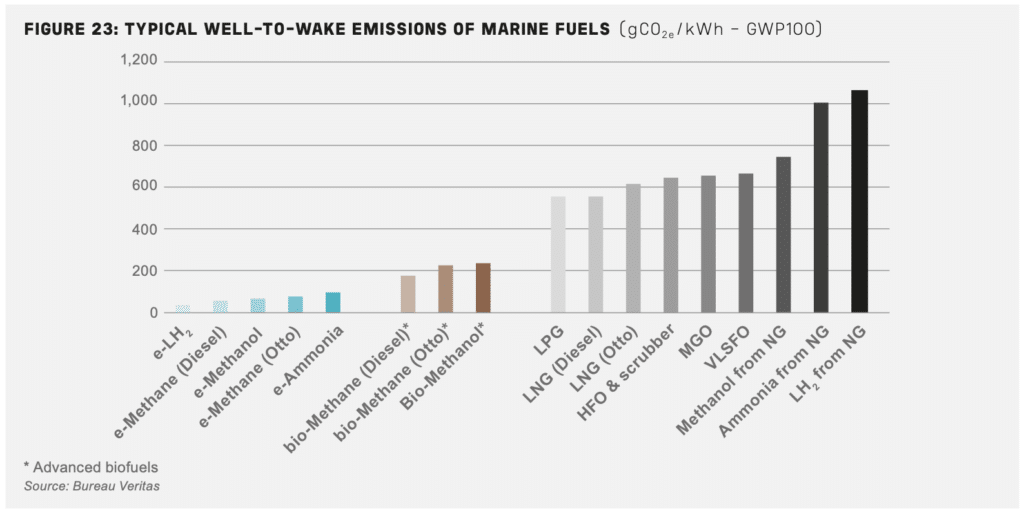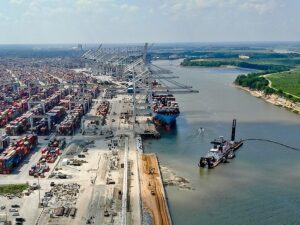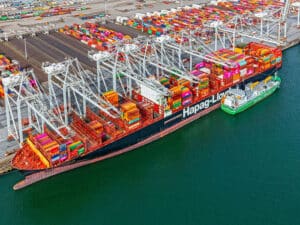
Op-Ed: Shipping’s next fuels must be assessed from well to wake
Written by Heather Ervin
Paul Delouche, Strategy Director at Bureau Veritas
By Paul Delouche, Strategy Director at Bureau Veritas Marine & Offshore
Only through a complete life-cycle analysis can we properly evaluate the environmental impact of alternative fuel options and make a genuine difference for the climate.
Will future ships be powered by ammonia, hydrogen, bio/e-methanol, liquefied bio/e-methane, or biofuels? This is one of shipping’s most pressing questions, and there isn’t a single answer. There will be horses for courses. Different shipowners are likely to make different choices, depending on their ship’s type, size, and operational context—as well as broader availability considerations in the regions and routes where they operate. The jury is still out on which fuel option or options will dominate the markets by 2050, but we are likely to see a patchwork of solutions for the foreseeable future.

As an industry, however, we also have a more fundamental question to answer. If we are to achieve true decarbonization in shipping, we need to assess whether the different fuel options currently on the table will actually reduce the amount of greenhouse gases (GHG) released in the atmosphere. And we can only do that by measuring their emissions throughout their lifecycle.
We need to define what we mean by “low and zero-emissions” fuels. Burning without emitting carbon is obviously important, but this is only one part of the emissions picture. To assess a fuel’s real impact on climate change, we need a “well to wake” (WtW) analysis that accounts for all GHG emissions released from the extraction or production phase, the transport and distribution of the fuel, through to the final use onboard vessels—as opposed to just measuring the emissions resulting from combustion on board.
A focus on production pathways
Take hydrogen, for example. Using it as a fuel on board will result in almost no greenhouse gas emissions in “Tank-to-Wake” (TtW) terms—in other words, if we only consider exhaust gas from internal combustion engines. However, today the majority of methanol, ammonia and hydrogen is produced from fossil fuels, which places them among the highest emitters from a WtW perspective.
Our recent white paper, Alternative fuels outlook for shipping, reports that typical well to wake emissions of ammonia and liquid hydrogen produced from natural gas are higher than LNG, and even than Marine Gas-Oil (MGO) and Very Low Sulphur Fuel Oil (VLSFO). In other words, even carbon-free fuels could generate higher WtW emissions than the fossil fuels that they are intended to replace, depending on how they are produced.
Furthermore, even within the same production pathway, a fuel’s impact may change depending on several parameters. A fuel produced with renewable energy but transported on long distances to its final use point may have higher WtW emissions than a fuel produced and used locally. For example, e-methane produced from solar panels and transported over long distances in a cryogenic state will have greater WtW emissions than locally consumed e-methanol produced from a wind farm – provided that in both cases, the carbon molecule used to make them comes from proven sustainable origin, be it from a biogenic source or Direct Air Capture.
This demonstrates the importance of considering the entire fuel production, supply and logistics chains in emissions assessments. It also shows why the production of these alternative fuels must be urgently decarbonized.
The central role of clean energy
This positions electrofuels (e-fuels), which are produced from renewable energy, as one of the most promising options to achieve true decarbonization in well to wake terms, alongside second-generation biofuels that are produced sustainably from renewable feedstocks.
E-fuels rely on green hydrogen production and require huge amounts of renewable energy. Therefore, access to renewable electricity on a large scale will be key to producing e-fuels and hydrogen, and a cross-sector approach will be needed to share resources such as wind and solar power between the maritime and other sectors.
Not to forget, e-fuels whose chemical composition is an hydrocarbon chain molecule, such as e-methanol or liquefied e-methane, will need to be manufactured from carbon molecules coming from proven sustainable sources (typically biogenic or Direct Air Capture). This adds to the technical and industrial challenge of clean production pathways for those fuels.
Changing marine fuels will necessitate major changes to the entire fuel supply and logistics chain. In addition to developing the engines that will use alternative fuels, we need to secure better visibility and guarantees of supplies. Achieving decarbonization in WtW terms will require unprecedented collaboration and transparency with upstream and production chains, including a broad range of stakeholders from energy and chemical suppliers to regulatory authorities and financiers.
Decarbonizing shipping in isolation does not make sense. We need a cross-sector approach, to share scarce resources between different sectors, and channel the available feedstocks where it makes most sense – especially towards hard-to-abate sectors like shipping and aviation. The maritime world has chosen to decarbonise, and the only way to succeed is to collaborate, sharing knowledge and resources across the industry and beyond. We will not succeed if we act in siloes.




